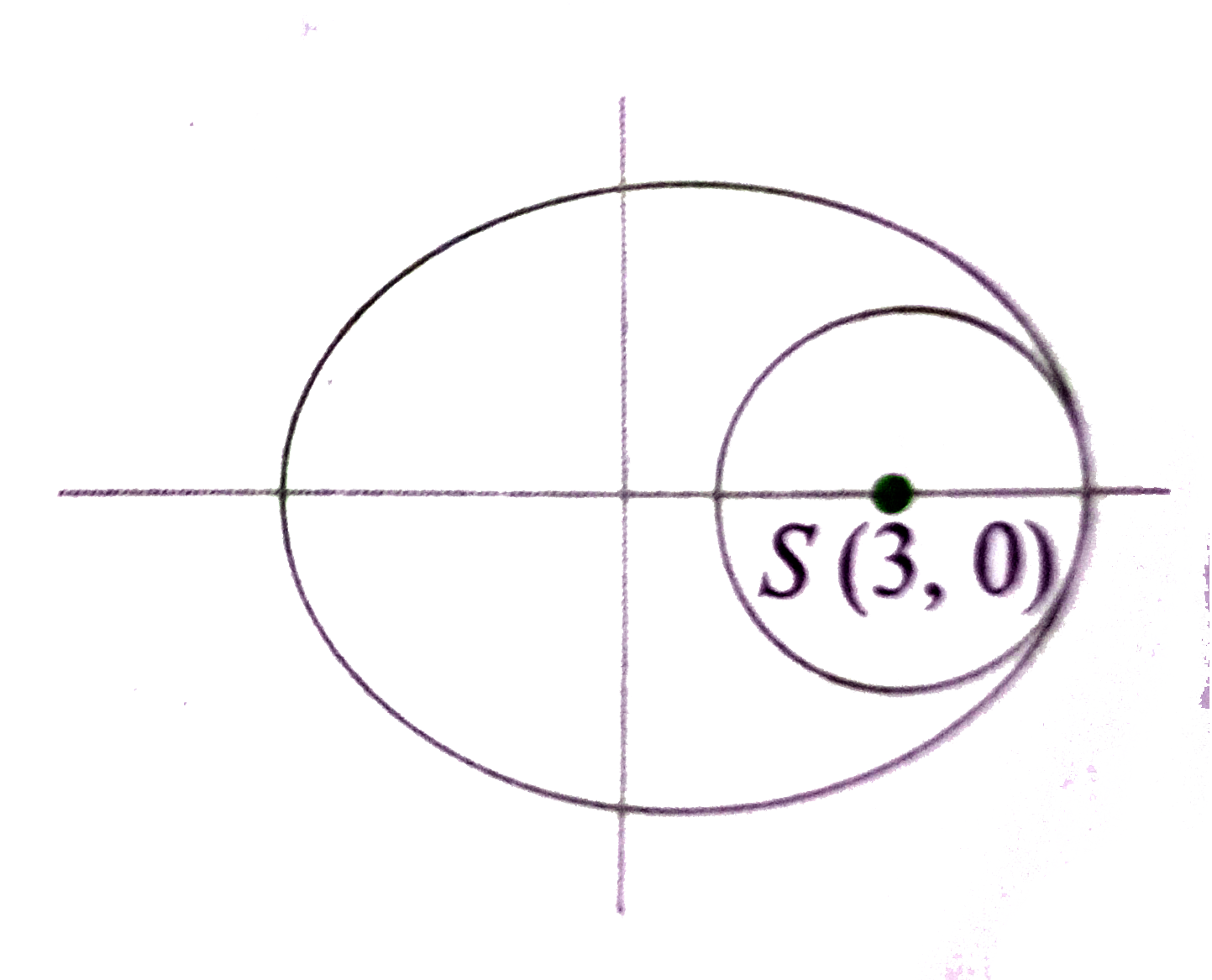An ellipse is drawn with major and minor axis of length 10 and 8 respectively. Using one focus a centre, a circle is drawn that is tangent to ellipse, with no part of the circle being outside the ellipse. The radius of the circle is
The correct Answer is:2
Givemn ellipse
x225+y216=1
∴E2=1−1625ore=35

then foci are (±ae,0)≡(±3,0)
Now, the circle having center (3,0) is
(x−3)2+y2=r2
Eliminating y2 from (1) and (2), we get
16x2+25r2−25(x2−6x+9)=400
or −9x2+150x+25r2−625=0
since the circle touches the ellipse, the above equation, has equal roots. Hence D=0,i.e.,22500+36(25r2−625)=0, which is not possible
Then the circle will touche the ellipse at the end of the major axis, (5,0) Hence, the radius is 2
Similar Questions
With one focus of the hyperbola x29−y216=1 as the centre, a circle is drawn which is tangent to the hyperbola with no part of the circle being outside the hyperbola. The radius of the circle is
View SolutionFrom the focus of the parabola y2=2px as centre, a circle is drawn so that a common chord of the curve is equidistant from the vertex and the focus. The radius of the circle is
View SolutionA chord of length 8 cm is drawn at a distance of 3 cm from the centre of a circle. Calculate the radius of the circle.
View SolutionA point is 26 cm away from the centre O of a circle and the length PT of the tangent drawn from P to the circle is 10 cm. Find the radius of the circle.
View SolutionLet x+6y=8 is tangent to standard ellipse where minor axis is 4√3, then eccentricity of ellipse is
View SolutionA point P is 13cm from the centre of the circle. The length of the tangent drawn from P to the circle is 12 cm. Find the radius of the circle.
View SolutionA circle is drawn whose centre is on the x - axis and it touches the y - axis. If no part of the circle lies outside the parabola y2=8x, then the maximum possible radius of the circle is
View SolutionAn ellipse with major and minor axis 6√3and6 respectively, slides along the coordinates axes and always remains confined in the first quardrant. If the length if arc decribed by center of ellipse is πλ6 then the value of lambda is
View SolutionThe centres of the circles are (a, c) and (b, c) and their radical axis is y-axis. The radius of one of the circles is r. The radius of the other circle is
View SolutionA long solenoid having n = 200 turns per metre has a circular cross-section of radius a1=1cm. A circular conducting loop of radius a2=4cm and resistance R=5(Ω) encircles the solenoid such that the centre of circular loop coincides with the midpoint of the axial line of the solenoid and they have the same axis as shown in Fig.

A current 't' in the solenoid results in magnetic field along its axis with magnitude B=(μ)ni at points well inside the solenoid on its axis. We can neglect the insignificant field outside the solenoid. This results in a magnetic flux (ϕ)B through the circular loop. If the current in the winding of solenoid is changed, it will also change the magnetic field B=(μ)0ni and hence also the magnetic flux through the circular loop. Obvisouly, it will result in an induced emf or induced electric field in the circular loop and an induced current will appear in the loop. Let current in the winding of solenoid be reduced at a rate of 75A/sec.
When the current in the solenoid becomes zero so that external magnetic field for the loop stops changing, current in the loop will follow a differenctial equation given by [You may use an approximation that field at all points in the area of loop is the same as at the centre
View Solution